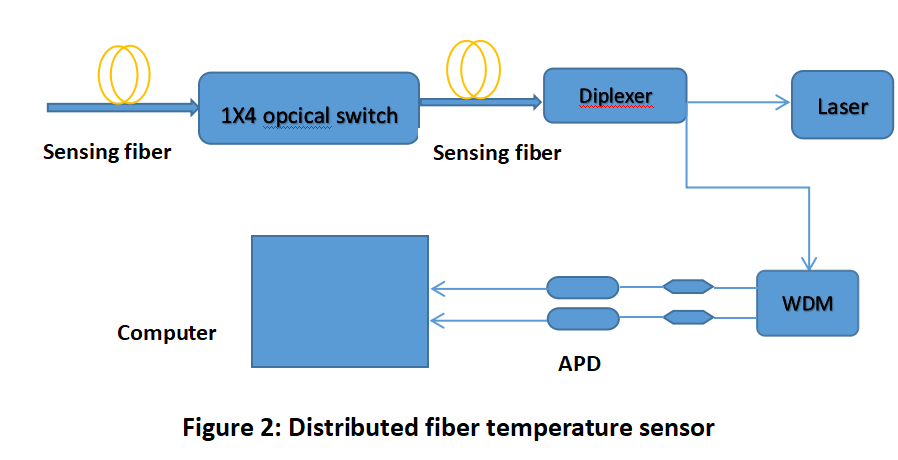04
2021
-
11
The application of fiber components in distributed fiber sensor
Author:
Lydia
With the deepening of the study of the non-linear effect of optical fiber, the distributed sensor of optical fiber has been widely studied and applied. In recent years, tunnels, cables, pipelines, and coal mines have provided a good external environment for the development of distributed fiber Raman temperature sensors. Distributed optical fiber sensing technology used in engineering can be divided into scattered light sensing and forward light-sensing according to the type of sensing light. Among them, scattered light is divided into Rayleigh scattering, Raman scattering, and Brillouin scattering. Sensing technology based on different optical effects can detect different physical parameters.
Sensing techniques based on different optical effects can detect different physical parameters.
1, Based on Rayleigh scattering fiber sensing technology engineering is mainly used for detecting vibration and sound signals;
2, Based on Raman scattering fiber sensing technology engineering is mainly used for temperature measurement;
3, Based on Brillouin scattering fiber sensing technology engineering is mainly used for strain and temperature dual parameter measurement;
4, Based on forwarding light interference fiber sensing technology engineering is mainly used for vibration and sound detection.
So how do fiber components achieve detection functions in distributed systems?
The following describes 2 applications of fiber components in Raman scattering distributed fiber sensing(DTS).
(1)R-OTDR, Raman Optical Time-Domain Reflected Distributed Fiber Sensing Technology.
Figure 1 shows the structure of a distributed optical fiber temperature measurement system. During the transmission of pulsed light, scattered light signals from different test points are partially returned to the fiber coupler along the transmission path. The fiber coupler couples approximately 50 percent of raman scattering photocouple to the photoprocessing subsystem.
Through the spectrometer, two different frequencies of light are separated and entered into different light paths for processing.
Because scattered light is also mixed with other scattered light and interference light, it is necessary to carry out some bandpass-through filtering of two optical paths and obtain Raman scattered light with temperature information and backward scattering light with the reference signal.

(2)Using the time-sharing characteristics of the optical switch to light. A 1×4 optical switch is embedded in the distributed optical fiber Raman temperature sensor system to expand the temperature measuring fiber from the original all the way to four ways, as shown in Figure 2. It can effectively extend the total temperature measurement fiber length of distributed fiber Raman temperature sensor system.

With the wide application of distributed optical fiber sensing technology in engineering, the demand for optical fiber devices in the interior is also increasing. As a manufacturer focused on passive fiber devices, RUIK offers customers a range of highly stable and reliable fiber components in distributed fiber temperature sensor (DTS) applications, such as Optical Filter Coupler, Optical Bandpass Filter, WDM, Fiber Circulator, Polarization Beam Splitter, Optical Switch, and other fiber components, and has won market recognition. Detailed parameters for fiber components can be further reviewed at www.ruikphotonics.com.


